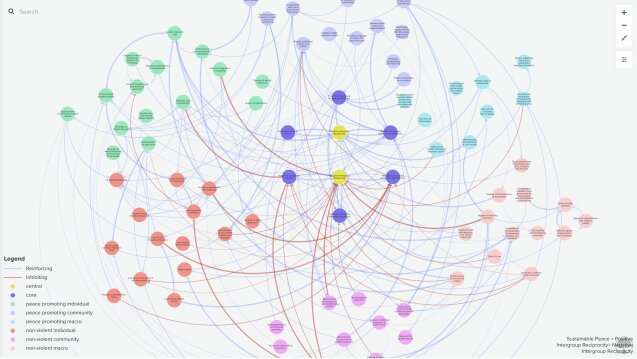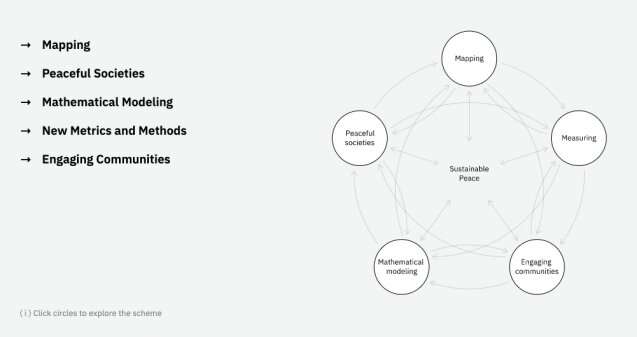New website maps and models the science of peace

What does it take to live in peace?
A recent United Nations report claimed, "If there is a principal raison d'être for the creation of the United Nations, it is to sustain international peace in all its dimensions." Yet since 1992 and U.N. Secretary General Boutros Boutros-Ghali's proposed Agenda for Peace, the international community has been struggling to reorient the work of the U.N. beyond crisis management and conflict mitigation to prioritize sustaining peace in countries that are not in conflict. According to the 2020 Global Peace Report by the Institute for Economics and Peace, violence today costs the world over $14 trillion annually and adversely affects millions of families.
Science could play a vital role in guiding U.N. policy and programming on peace by specifying the basic conditions and processes that increase the likelihood of sustaining peace in societies. Unfortunately, our understanding of what's needed to build a peaceful society is limited by the fact that they are rarely studied by most peace scholars. Rather, they tend to study the de-escalation or mitigation of aggression, violence and war—and peacekeeping, peacemaking and peacebuilding in the context of war—assuming that doing so will shed sufficient light on sustaining peace. But to promote sustainable peace we need to learn from communities that have sustained harmony over generations.
A new website (http://sustainingpeaceproject.com/) centering on recent research on sustainably peaceful societies has just been launched at The Earth Institute at Columbia University. The website presents an interactive introduction to the findings and outputs of the work of a multidisciplinary team of scholars that began studying peaceful societies in 2014. It showcases a global map of peaceful societies, findings from hundreds of empirical studies, and peace tech visualizations and simulations from the Sustaining Peace Project at the Advanced Consortium on Cooperation, Conflict and Complexity (AC4), which seeks to advocate for more a more comprehensive understanding of how peace is sustained with local stakeholders, policymakers, and academics.

The Sustaining Peace Project website offers viewers an opportunity to interact with cutting-edge interactive tools, and explore visualizations related to peace and conflict. It reflects the work of an interdisciplinary team of researchers who have spent the past several years using methods from complexity science to visualize the dynamics of sustaining peaceful societies, and developing innovative ways to make this perspective accessible and useful for a broad audience.
The website features:
- An overview of the Sustaining Peace Project at the Earth Institute's AC4.
- A map of societies and peace systems (clusters of societies) that have sustained peace for significant periods of time (50+ years).
- A visualization of the published empirical research related to peace and conflict, highlighting different factors that peace science suggests are important, and showing how these different factors are related to one another.
- An interactive visualization of a mathematical model that provides users with the chance to adjust levels of different critical elements within a society, and see how these various factors may interact to lead to probabilities of positive or negative reciprocity between groups.
The website aims to make research and tools concerning the science of peace accessible to a wide audience—policymakers, students, peace experts, and curious individuals—and invites feedback and involvement from those who may be interested.
Provided by State of the Planet
This story is republished courtesy of Earth Institute, Columbia University http://blogs.ei.columbia.edu.



















